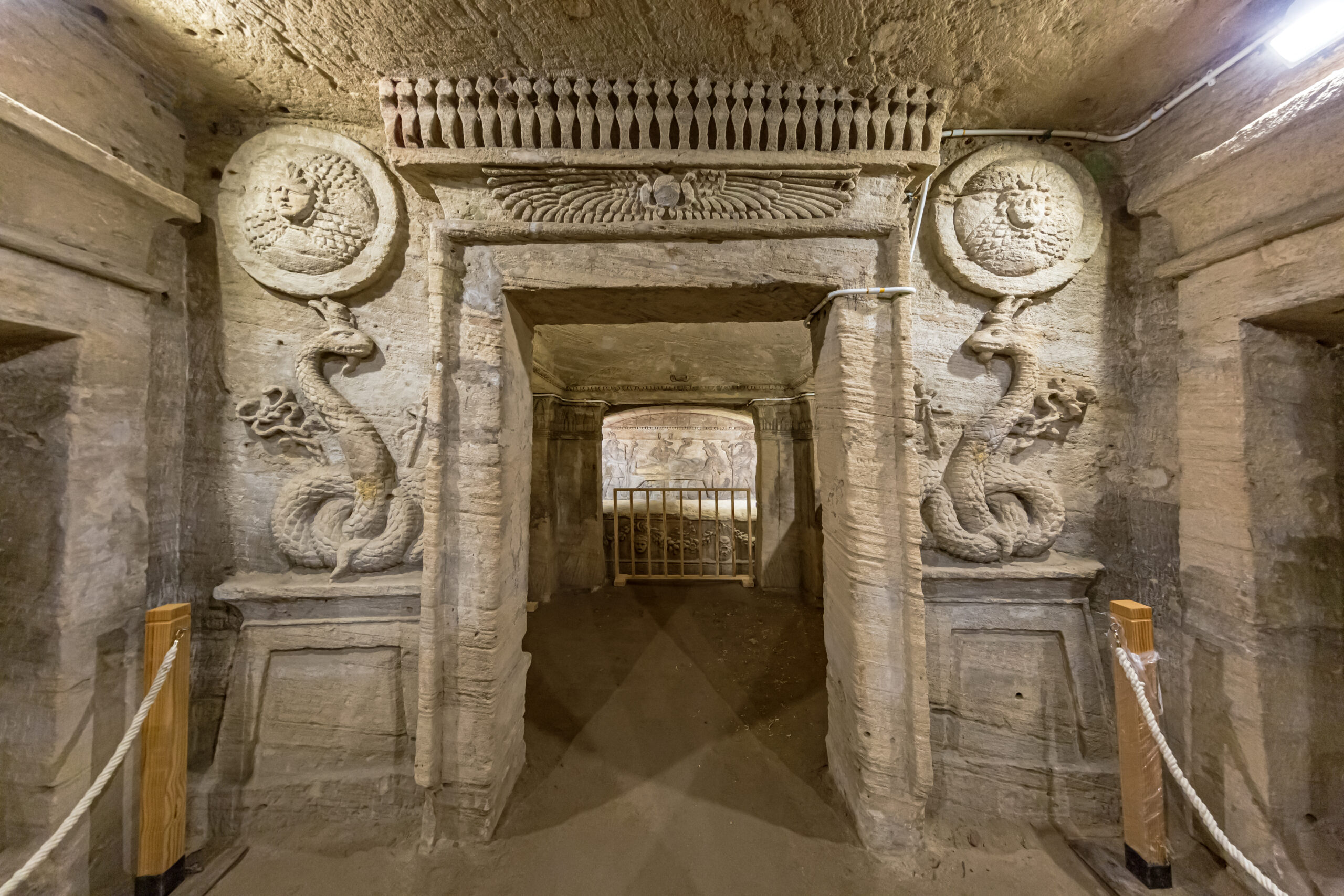The Catacombs in Alexandria

Written by Ann-Louise Karlsson Ploug on . Posted in Blog. No Comments on The Catacombs in Alexandria

Written by Ann-Louise Karlsson Ploug on . Posted in Blog. No Comments on The Red Pyramid of Dashur in Egypt
Red Pyramid, Dashur, Necropolis, Egypt – July 19, 2022: The Red Pyramid, also called the North Pyramid, is the largest of the pyramids located at the Dahshur necropolis in Cairo, Egypt. It was the third pyramid built by Old Kingdom Pharaoh Sneferu, and was built 2575–2551 BCE. Named for the rusty reddish hue of its red limestone stones, it is also the third largest Egyptian pyramid, after those of Khufu and Khafre at Giza. It is also believed to be Egypt’s first successful attempt at constructing a “true” smooth-sided pyramid. Local residents refer to the Red Pyramid as el-heram el-watwaat, meaning the Bat Pyramid. The Red Pyramid was not always red. It used to be cased with white Tura limestone, but only a few of these stones now remain at the pyramid’s base, at the corner. During the Middle Ages much of the white Tura limestone was taken for buildings in Cairo, revealing the red limestone beneath.
Written by Ann-Louise Karlsson Ploug on . Posted in Blog. No Comments on Greeting from our norwegian family

Visited the highlights of the West Bank and sailed the felucca – March 2017
Written by Ann-Louise Karlsson Ploug on . Posted in Blog. No Comments on Visit from Tobin and James
Just had a visit of Tobin and James. They had a full tour visiting Cairo, Luxor and Aswan with a cruise oo the Nile.
They made such beautiful pictures that we want to share with you.
Hope you will enjoy them and get inspired for your next holiday.